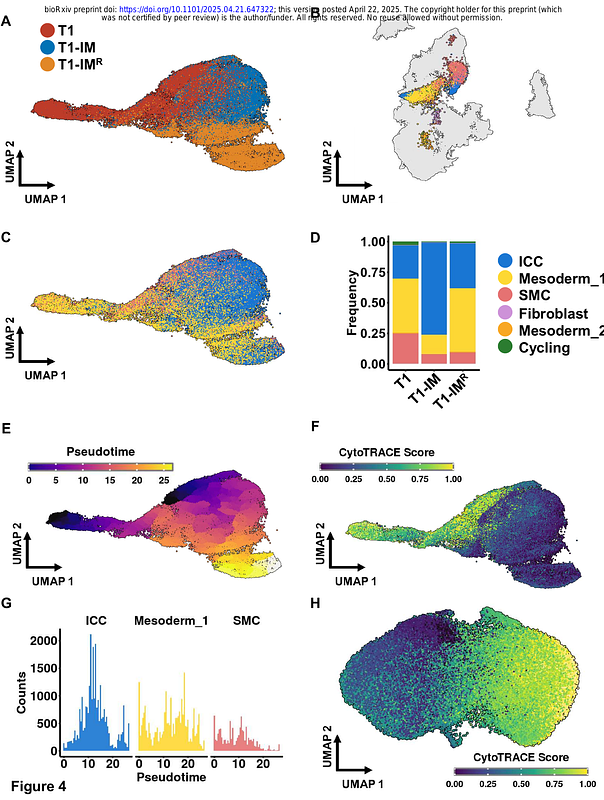Single Nuclei-Derived Molecular Subtypes of Gastrointestinal Stromal Tumors Correlate with Clinicopathologic Features and Predict Clinical Outcomes

Single Nuclei-Derived Molecular Subtypes of Gastrointestinal Stromal Tumors Correlate with Clinicopathologic Features and Predict Clinical Outcomes
Sharma, A. K.; Wenzel, A. T.; Jun, J.; Guragain, D.; Tang, C.-M.; Antkowiak, M.; Bhargava, S.; Burgoyne, A. M.; Fanta, P.; Munter, S. E.; Chen, K. Y.; Doherty, T. M.; Murugesan, M.; Sanchez-Fernandez, A.; Malli, S.; Mundi, P. S.; Rothschild, S.; Evans, D.; Kim, W.; Schwartz, G. K.; Califano, A.; Tamayo, P.; Mesirov, J. P.; Sicklick, J. K.
AbstractHistorically, gastrointestinal stromal tumor (GIST) has been subtyped by oncogenic driver mutations. However, tumors with the same mutational profile can have variable biology. To further explore the impact of molecular diversity on GIST biology, we performed single nucleus RNA sequencing on 16 primary GIST and utilized an integrated single cell atlas of the normal GI tract composed from multiple publicly available datasets to identify six distinct GIST cell states. We then statistically estimated the relative abundances of these profiles in bulk transcriptomic data. These were used to define six common GIST molecular subtypes based upon one or two predominant tumor cell states. We found that these molecular subtypes correlate with tumor locations, mutational profiles, and patient outcomes, and validated these subtypes in an independent international cohort. These molecular subtypes have the potential to be used for clinical prognostication for patients with GIST, identifying new therapeutic targets, and studying the cell of transformation of GIST.